Embark on a transformative journey to a clutter-free life with strategic steps that prioritize organization, efficiency and simplicity.
Decluttering at the speed of life involves a systematic approach that breaks down the overwhelming task of organizing your space into manageable steps.
This method focuses on making quick decisions about what to keep and what to discard, followed by organizing what remains in a way that suits your lifestyle.
By following a set of simple, practical steps, you can transform your cluttered space into a tidy, functional living area.
Dive into this article to explore these steps in detail, discover helpful tips, and learn how to maintain your organized space in the long run.
Understanding Your Clutter Personality

It’s essential to comprehend that everyone has a unique relationship with their possessions. Some individuals maintain a negligible quantity, attaching little sentimental value to physical items, making decluttering initiatives relatively straightforward.
Conversely, others form significant emotional bonds with their belongings, making the act of letting go more challenging. Recognize your tendencies and use this insight to develop personalized strategies to overcome clutter.
For example, if you’re prone to accumulate items for their sentimental value, practice conscious decision-making to discern between genuine keepsakes and unnecessary clutter. Remember, understanding your habits is a critical first step in shaping an effective decluttering method tailored to your personality.
What Decluttering IS and ISN’T
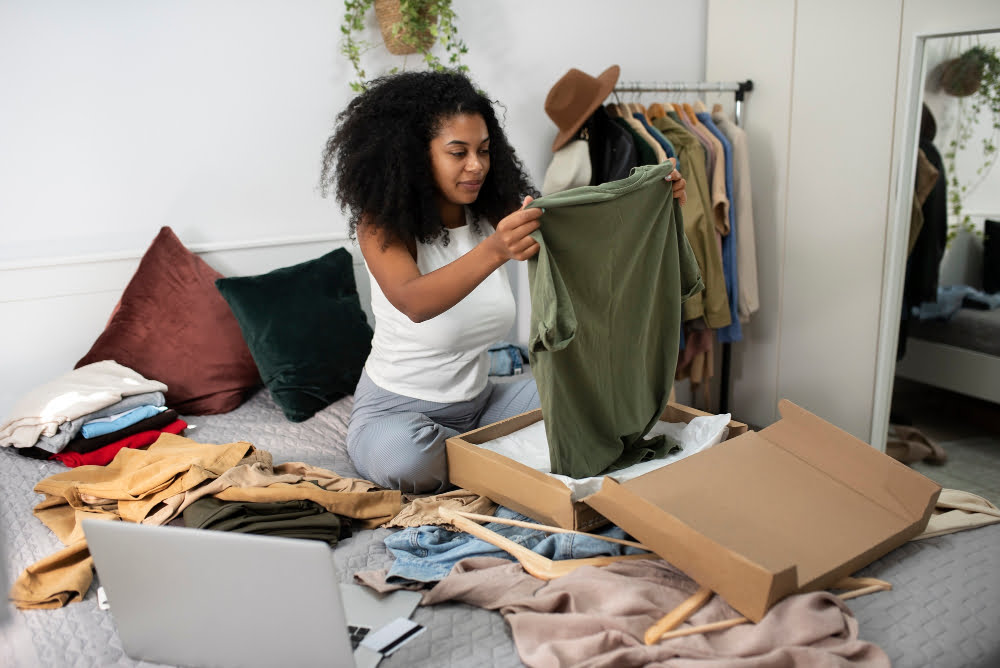
Decluttering revolves around the essential principle of making mindful choices about belongings. It includes determining the importance of items, keeping valuable ones and letting go of objects that cause clutter.
However, contrary to common belief, decluttering is not merely discarding items randomly or aiming for a minimalist lifestyle. The objective is not to limit possessions needlessly, but to eliminate chaos by designing a manageable, clean, and practical environment.
Remind yourself, it’s not about having less; it’s about making your space work for you.
How To Get Started With Decluttering When You Feel Overwhelmed
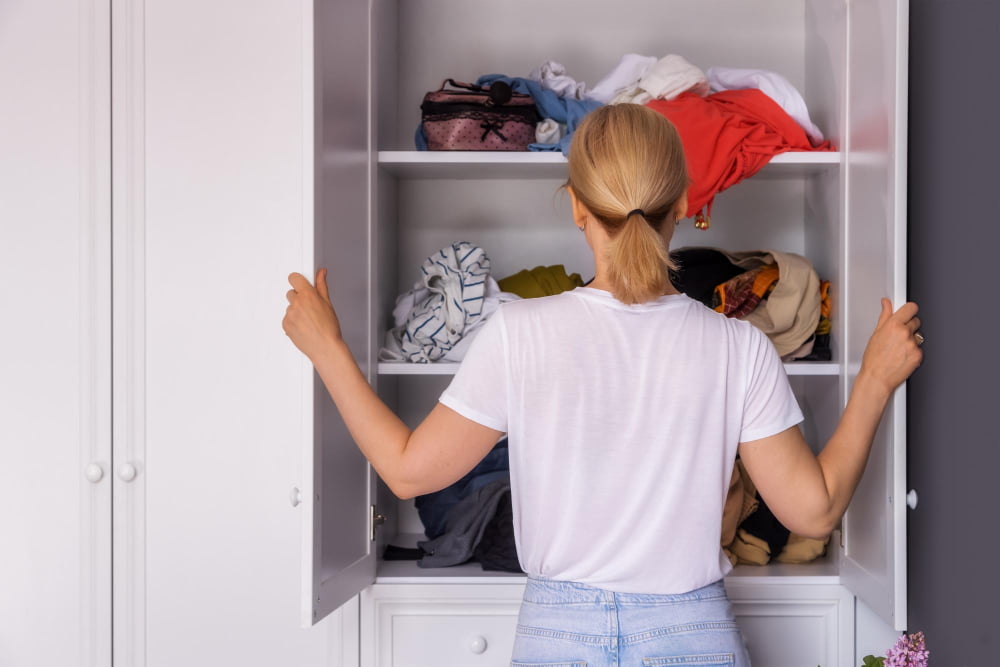
Determine a starting point that seems less daunting; a single drawer or a section of a room, perhaps.
Begin sorting items into three categories: keep, discard, or donate. Keep what is functional and brings you joy, toss or recycle what is broken or outdated, and donate items in good condition but no longer useful to you.
Aim to reduce, not achieve perfection. Small, consistent actions can lead to significant change over time. Remember, the goal is progress, not perfection.
As you gain momentum, gradually tackle more challenging areas.
Sorting, Organizing, and Discarding
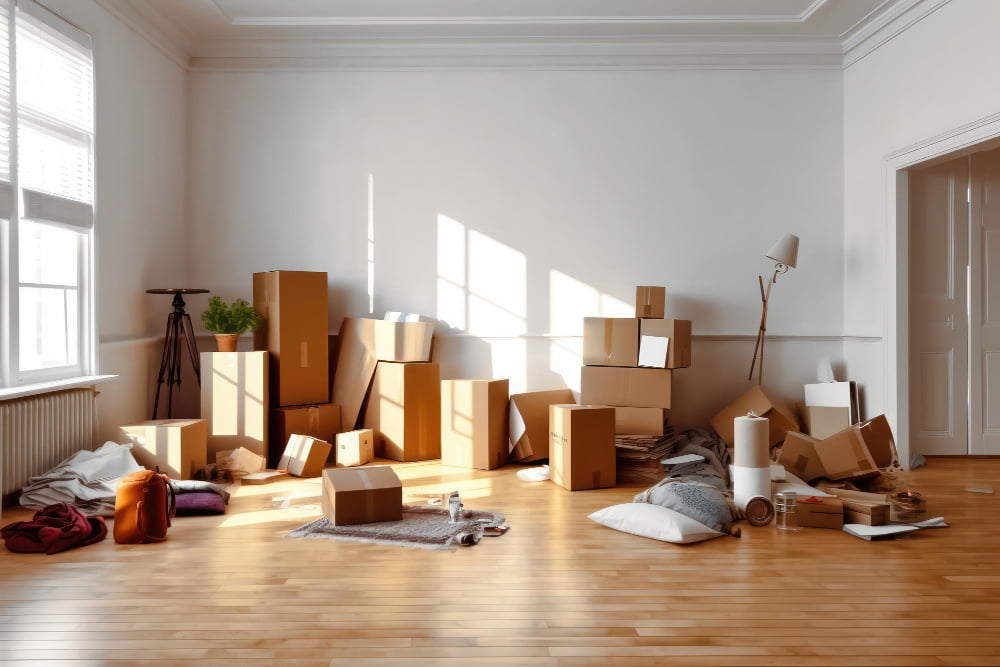
To efficiently declutter, designate three separate areas for items ‘to keep‘, ‘to discard’ and ‘to donate’. Start going through each item, asking yourself if it brings you joy or has been in frequent use. This process should be swift, only allowing for minimal contemplation time.
Harness the power of categorizing when organizing your items. Group them based on their function, frequency of use, or the room they belong to. This will pave the way for an easy, clutter-free retrieval system.
Lastly, after deciding on what to keep, discard the items identified as no longer needed. Additionally, consider donating gently-used items that no longer serve a purpose in your home. Not only will it keep your space tidy, but it also aids in creating a positive impact.
The Container Concept
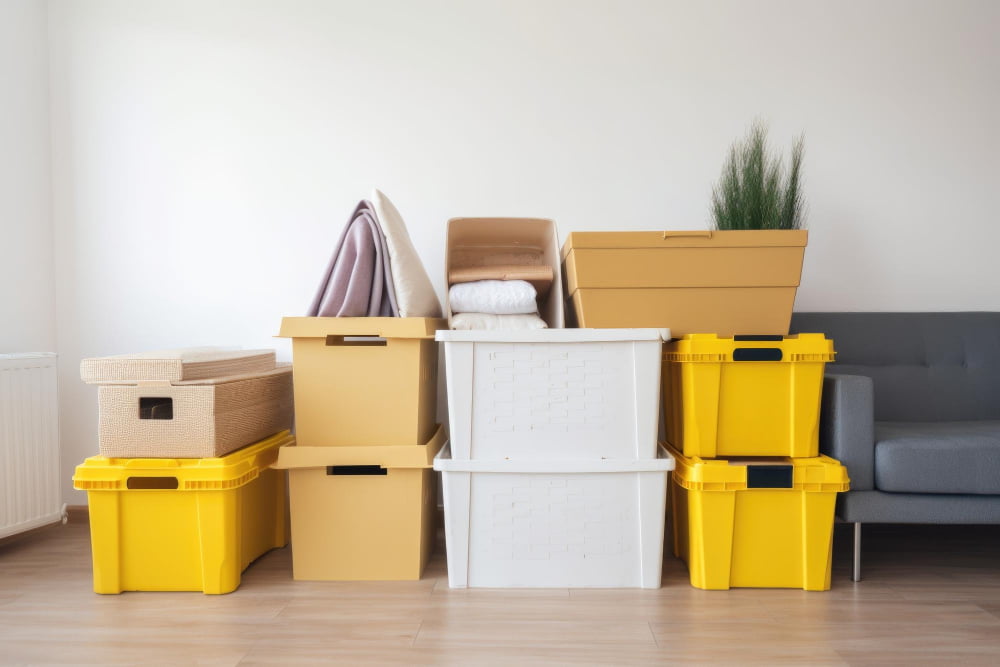
In this ingenious method, storage containers dictate the amount of items you keep, not vice versa. First, determine suitable and practical containers for your belongings. This can range from a box for your shoes, a shelf for your books, to a drawer for your tools.
The key rule is: if it doesn’t fit, it’s time to discard or find another home for it. Resist the urge to get larger containers; the goal here is to limit accumulation, not accommodate it. This approach simplifies decisions on what to keep by setting physical boundaries.
Moreover, containers streamline the organization process, as every item has a designated home. They also guide future purchases, as any potential new item must also fit into a predetermined space. Remember, the container itself should easily fit into your living space without causing clutter.
Over time, this technique helps establish discipline in maintaining an uncluttered living environment.
Creating a Sustainable Decluttering Routine

Establishing a dependable routine for decluttering works wonders in maintaining an organized and clean space in the long run. Begin by setting aside a consistent time each day or week dedicated to declutter efforts. Whether it’s a solid hour or a brief 15 minutes, what’s important is adhering to this routine.
Consistency helps turn the process into a natural habit.
Always start decluttering in the most frequently used spaces. Clearing these areas first not only brings immediate benefits but also provides a sense of accomplishment to keep you motivated. Incorporate the ‘one in, one out’ rule, meaning for every new item that comes in, an older, less useful one goes out. This prevents the accumulation of unnecessary belongings.
To maintain the routine, make a point of returning items to their designated place after use. A place for everything, and everything in its place- this mantra makes a world of difference. Regular quick clean-ups, such as a speed decluttering session before bedtime, can also be valuable in preventing clutter from piling up.
Remember, the objective is a sustainable routine that suits your lifestyle, not a drastic overnight transformation. It might take several iterations to find the perfect routine, but with persistence, a clutter-free environment is well within your grasp.
Managing Emotional Attachments to Items

It’s common to find oneself emotionally connected to certain possessions. Unresolved emotional bonds may often lead to accumulation of unnecessary items contributing to a cluttered environment. Recognizing this connection is the first step toward letting go. Here’s an actionable approach.
1. Identify the emotions – It may be nostalgia, guilt, fear of scarcity, or another emotional response. Understand why you’re holding on.
2. Challenge those feelings – Ask yourself, does this item truly contribute to your happiness, or is it holding you back by taking up space, both physically and emotionally?
3. Develop coping strategies – Write down memories associated with the item, take a picture of it, or give it to someone who will use and appreciate it. This may aid in reassuring yourself that letting go of the object does not erase its associated memories.
4. Practice Mindful Decluttering– Make it a lifestyle where you only keep items that resonate with your present taste and needs. Allow room for growth and change.
Remember, the goal is to establish a physically and emotionally harmonious space. Enjoy the process and take small steps—every item you part with is progress.
Decluttering Key Areas in Your Home
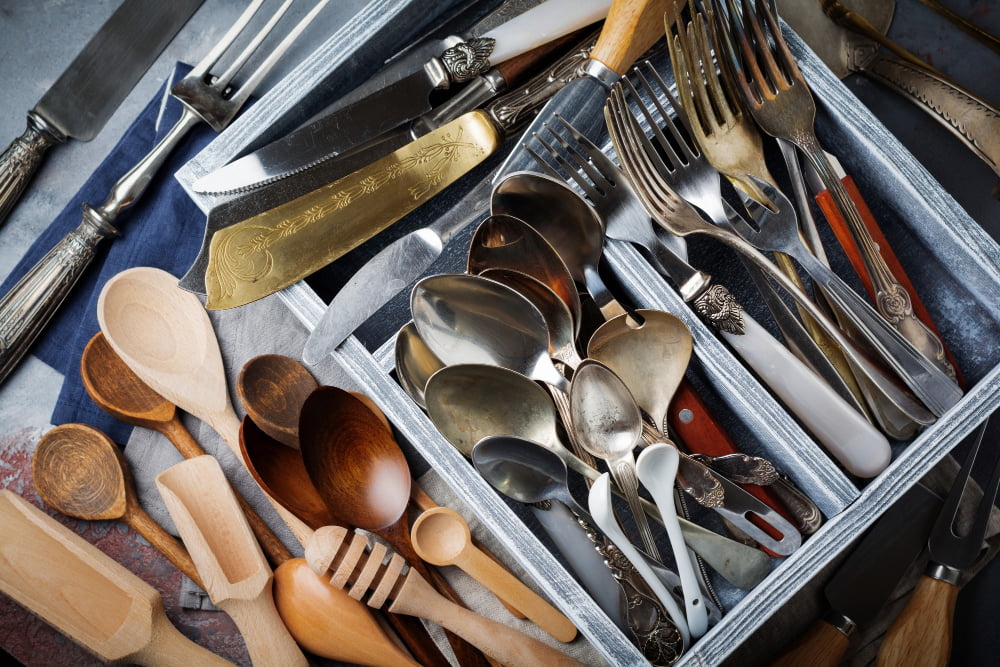
Start with the areas that have the highest impact on your daily life. For instance, the kitchen is a hub of activity and often a primary candidate for clutter. Pare down unnecessary utensils, remove duplicate kitchenware and use drawer inserts for easy organization.
Next up, living spaces should be inviting, not chaotic. Keep only essential items, use furniture with built-in storage for convenience, and keep surfaces as clear as possible.
Bedrooms should promote rest. Reduce clothing to only the pieces you love and wear, organise your closet by category and keep your bedside table minimal.
Lastlly, don’t forget your digital space. Regularly sift through documents and photos on electronic devices for a better organised digital life.
Every area of your house has the potential to look tidy and spacious with the right decluttering and organising techniques.
The Clutter Cycle
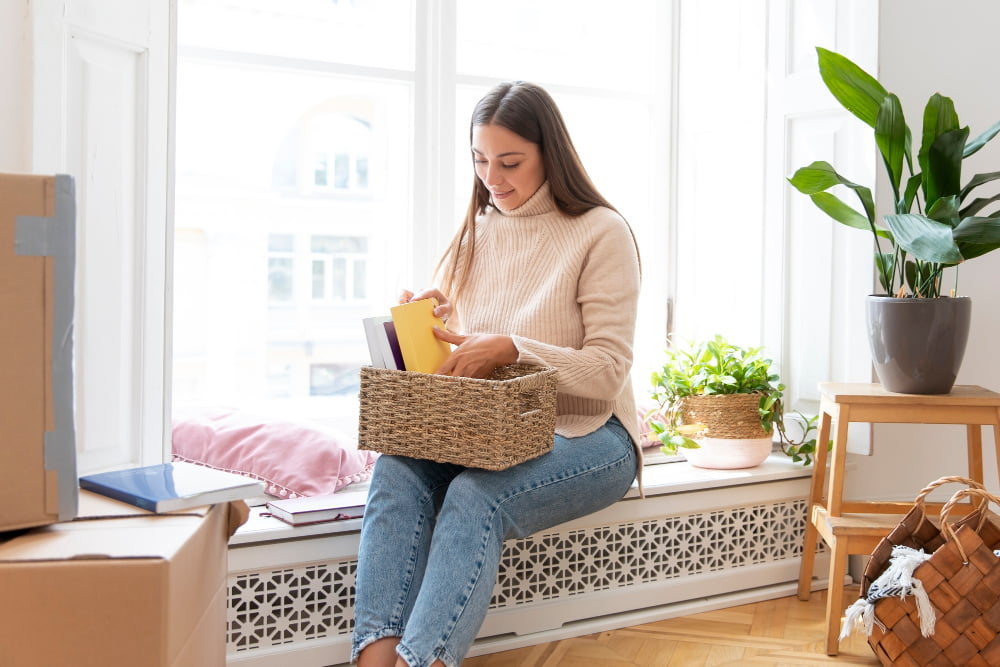
Understanding the clutter cycle leads to more efficient decluttering efforts. This pattern starts with the acquisition of items, followed by a failure to discard outdated or unnecessary possessions, ultimately resulting in accumulation.
Breaking this cycle requires a proactive approach: conscientious shopping habits, regular sorting, and discarding items when they’re no longer needed.
This prevents the tendency to stockpile, thus keeping your living environment clutter-free.
Practice this consistently, and you’ll find the cycle gradually diminish, ensuring a clean, functional living space.
Smart Storage Solutions for Staying Clutter-free
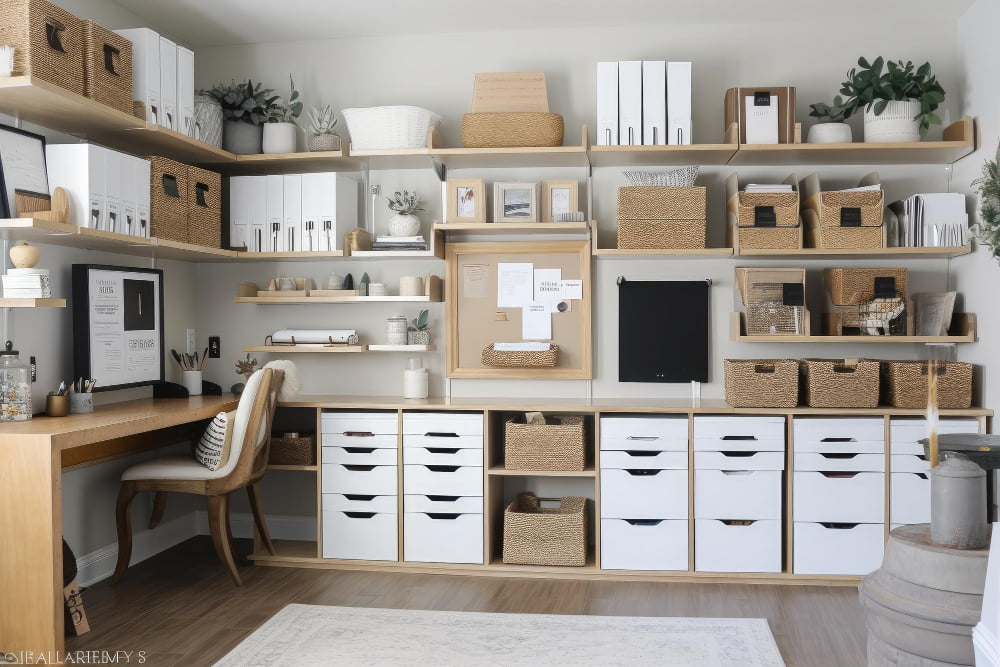
Incorporating strategic storage is undeniably a critical element in maintaining a clutter-free living space. Select solutions that emphasize easy access and visibility.
Clear storage bins, drawer dividers, and tiered shelving are all excellent options. They allow you to see your belongings at a glance, minimizing the chance of items getting lost in the back of a crowded drawer or closet.
Make sure every item has its own ‘home’ to return to after use, which will simplify tidying tasks, keep clutter to a minimum, and reduce your cleaning time.
Remember, the goal is not merely to stash items away, but to create an efficient, flowing system where everything has its place, and everything is in its place.
Maintaining a Clutter-free Space Overtime
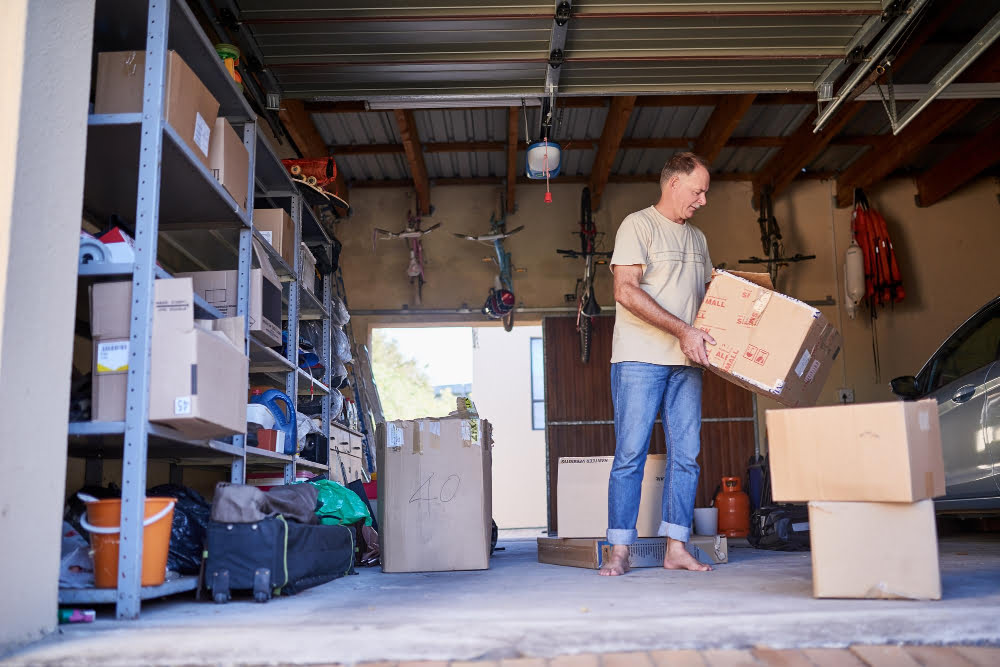
Mastering clutter control is more about forming consistent habits rather than one-off tidying sessions. Once a space has been attentively decluttered and organized, preserve its cleanliness with a steady routine.
Daily maintenance activities like returning items to their designated homes after use or sorting mail immediately upon receipt prevent buildup. For larger areas such as a garage or attic, earmark one day each season for an overall check and organize.
Lastly, adhere to the “one in, one out” rule. Ensure that every new item brought into your space comes with the departure of an existing item, ensuring equilibrium. Through regular care and attention, your orderly home will stand the test of time.
How To Help Family And Friends Declutter

Supporting a loved one in their decluttering efforts requires a sensitive and respectful approach. First, it’s critical to understand the person’s motives and readiness for change. Address their worries about discarding items and reassure them about the benefits of a clutter-free environment.
It’s generally more productive to start with less personal areas, like the kitchen or living room, to minimize possible emotional resistance. Adopt the “one item at a time” rule in this process to avoid overwhelming them.
When it comes to sorting items, adopt practical principles like the ‘one-year’ rule – if it hasn’t been used or worn in a year, it’s a candidate for removal. Avoid judgement and be patient as they make decisions.
Finally, assist them in setting up an easy-to-follow organizing system, prioritize proper storage solutions and encourage its maintenance. This will make the decluttering result more sustainable, benefiting them in the long run.
FAQ
What are the questions in decluttering at the speed of life?
The two paramount questions involved in the decluttering process include, “If I needed this item, where would I look for it first?” and “If I needed this item, would it ever occur to me that I already had one?” These serve as critical guideposts in making effective decluttering decisions.
What is the 20 rule decluttering?
The 20/20 decluttering rule is a guideline suggesting that items should be discarded if they can be replaced in less than 20 minutes for less than $20.
What is Dana K White’s method of decluttering?
Dana K White’s method of decluttering involves organizing items based on the first place one would instinctively look for them, and conducting this organization quickly for efficiency.
How does the “container concept” work in decluttering?
The “container concept” in decluttering refers to assigning a specific space or ‘container’ for each item and ensuring that once the container is full, no other item is added unless something is removed first.
How can the “less is more” philosophy be effectively integrated into your decluttering process?
Integrating the ‘less is more’ philosophy into your decluttering process can be effectively achieved by regularly assessing and eliminating unnecessary items, focusing on maintaining only those that serve a function or bring joy.
What steps does Dana K White recommend for maintaining decluttered spaces after the initial purge?
Dana K White recommends maintaining decluttered spaces post-purge by routinely asking “Is this item enhancing my life or causing stress?”, donating unused items, and limiting acquisitions to essentials.
Related Stories
- Decluttering Personal Items: A Step-by-Step Guide to Tidying Your Space
- Declutter Garage: Step-by-Step Tips for a Tidier Space
- How Long Does It Take to Declutter a House?
- Declutter Clothes: Step-by-Step Guide to Organizing Your Wardrobe
- How to Declutter: A Comprehensive Guide for a Clutter-Free Home